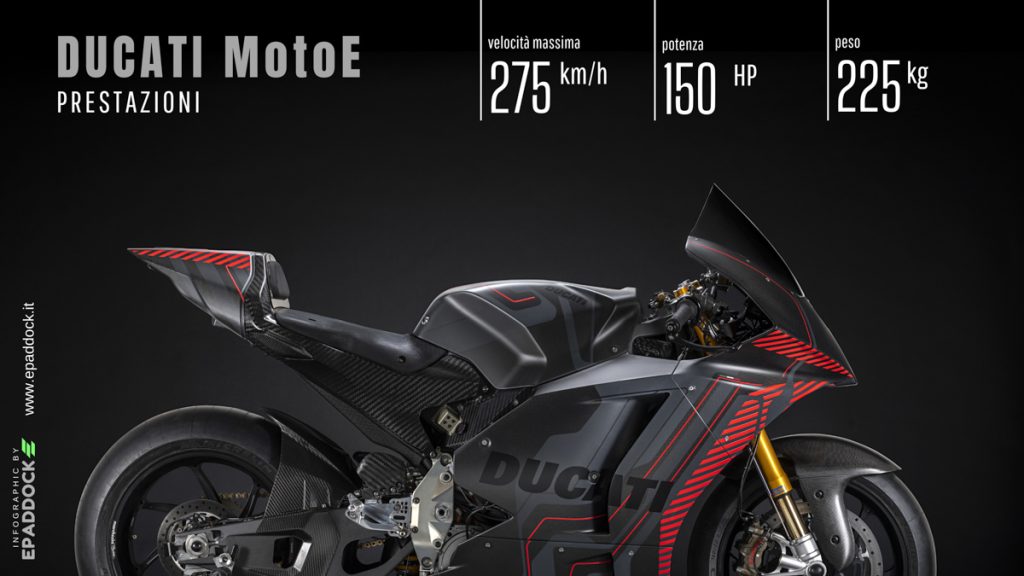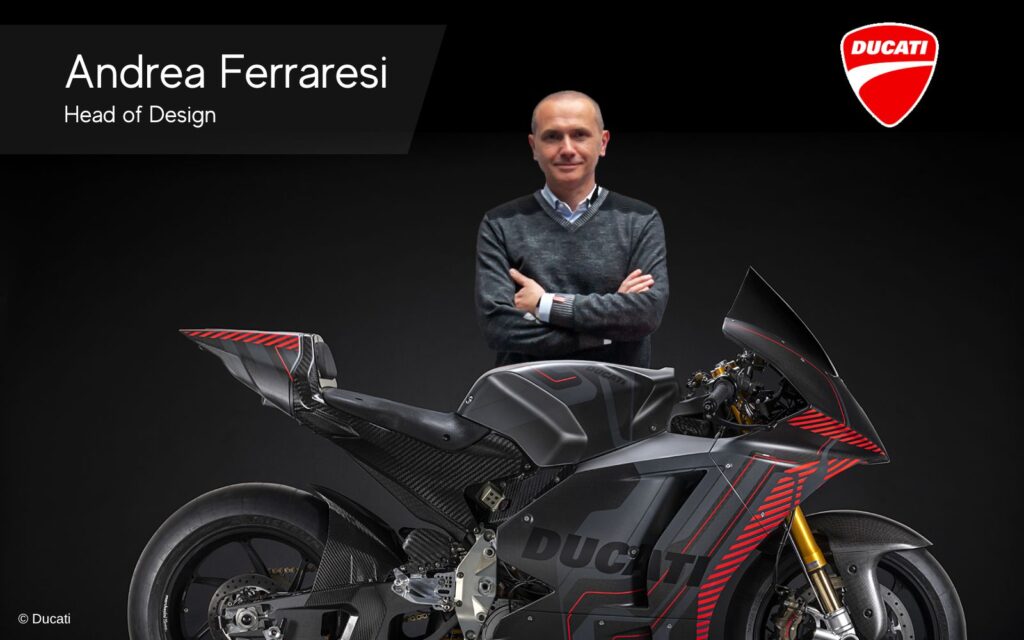
A no-reserve dialogue with Andrea Ferraresi, Design Director of Ducati: a man who used to say, 'in Ducati, we hate weight' and found himself designing a MotoE. Discovering that, with accuracy and imagination, you could get "a Masterpiece" out of it.
Destiny was marked. Because, as he says, 'if you're from Modena, it's easy for you to like engines', to dream of becoming an engineer and maybe work on track. Being able to become Design Director of the Centro Stile (Design Centre) of the World Champion manufacturer was less obvious, but - in the case of Andrea Ferraresi - it went just like that: his team has signed some of the most desirable motorbikes of recent years and the satisfactions keep coming. Now, from the top of the world, Ferraresi speaks with passion and an abundance of detail about this latest challenge faced by his team: to design a MotoE that is beautiful and powerful... like a Ducati.
So: what does the "Ducati Good Designer's Manual" envisage for an electric motorbike?
"The manual of the good Ducati designer is one, always the same: it involves applying specific rules to all our motorbikes but keeping the specific model application in mind. The Multistrada has one profile, a Monster has another; the MotoE is a pure racing bike and has a completely different one. At the Centro Stile, this was the first time we designed a prototype. It was a big change compared to other experiences: in the case of Superbikes, for example, we design the street models, and those models later go racing, so we work in a loop with the Reparto Corse (the racing department). When we start to design a Panigale V4, we ask the racing department for some information about aerodynamics and other specific issues, then we go on to design the bike, and we design it at the Centro Stile because... it has to be beautiful, it has to be a Ducati! But then we go back to them and let them check the result."
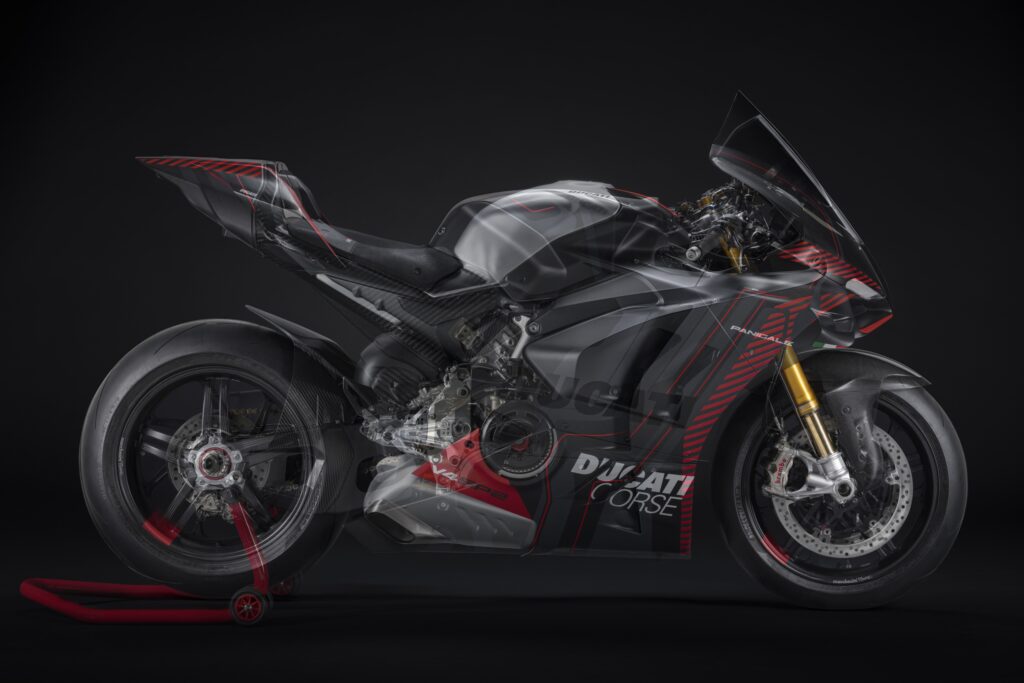
And in this case?
“In the case of MotoE, we started from the requests and needs of the Reparto Corse and included them from the first sketches we did. Specifically, talking about style, the main requirement was to have low drag and aerodynamic resistance: that's why it was decided, for example, that the bike would not have wings. The aerodynamic package was designed to minimise the Cx*S parameter (Cx is the aerodynamic coefficient in the forward direction of the motorcycle, and S is the frontal area), even accepting that we would not have the downforce generated by the wings. Given the eight-lap target set by Dorna, the most important thing was to reduce drag. So, to return to the beginning, the "Ducati designer's manual", whatever bike you design, dictates that you adopt the old KISS principle: Keep It Simple and Stupid."
Do you mean you always have to adopt the most straightforward solution?
“You know, what's not there doesn't weigh and doesn't break. So you must make a bike that is always essential, without style exercises or mannerisms. Of course, both the designers and the mechanical engineers always want to put their own view on it, but you have to remember the objective and keep Ducati's values in mind."
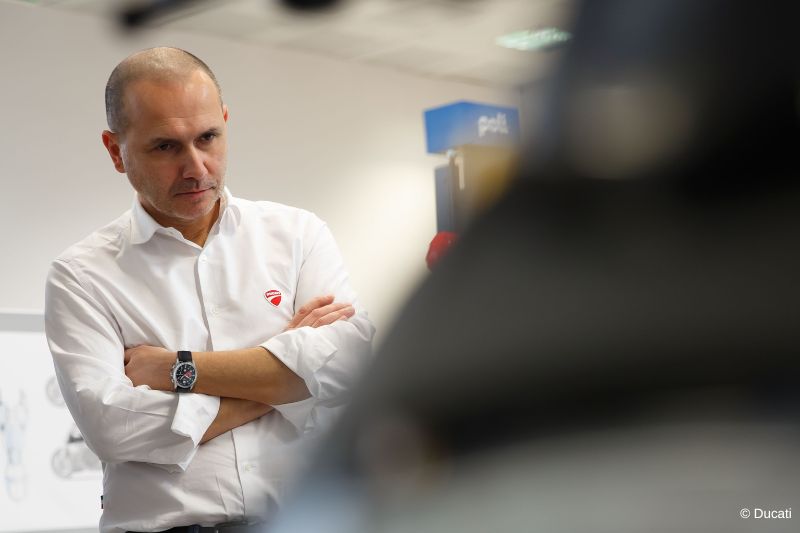
Let's remember these values, then.
“Style, Sophistication, Performance and Trust. The most sensitive issue is 'Sophistication'. We understand it as the 'search for the solution': not the first, the easiest or the cheapest, but the one that brings all requirements together, therefore, the most sought after. We don't like compromises; we aim for the optimum: for style, engineering, and aerodynamics. So OK Sophistication, but don't get carried away: the solution has to be clever and smart from all points of view without adding things you don't need. And in a racing bike, this is much more important! Maximum essentiality and forms that follow the function.”
On the MotoE, what was the exact request made to the Centro Stile?
“A fast bike with low aerodynamic drag and as beautiful as possible because it would be a communication tool for Ducati: over-photographed, over-shot, in the spotlight from day one. Continuity in design, a bike that would be identified with a Ducati superbike and that would take up the styling choices of a Panigale V4 and not a MotoGP bike."
In a previous interview, you said that in Ducati, you hate the weight. So when they told you that you had to design a 220-230kg motorbike, what did you think?
"Well! At first, we hoped the design team could stay under that threshold, but it was difficult: if you want to race eight laps, the energy density of the battery is that; if you want to recharge the bike immediately when it returns to the pits, the cooling system is that... in short, in the end, the weight was irreducible. So we took it as a super-challenge: in designing a Panigale V4, are you maniacal in your search for lightness? And here is more! If the powertrain weighs so much, what's around, it will have to weigh very little. And it's not enough to use carbon, titanium and magnesium: you need brilliant design solutions."
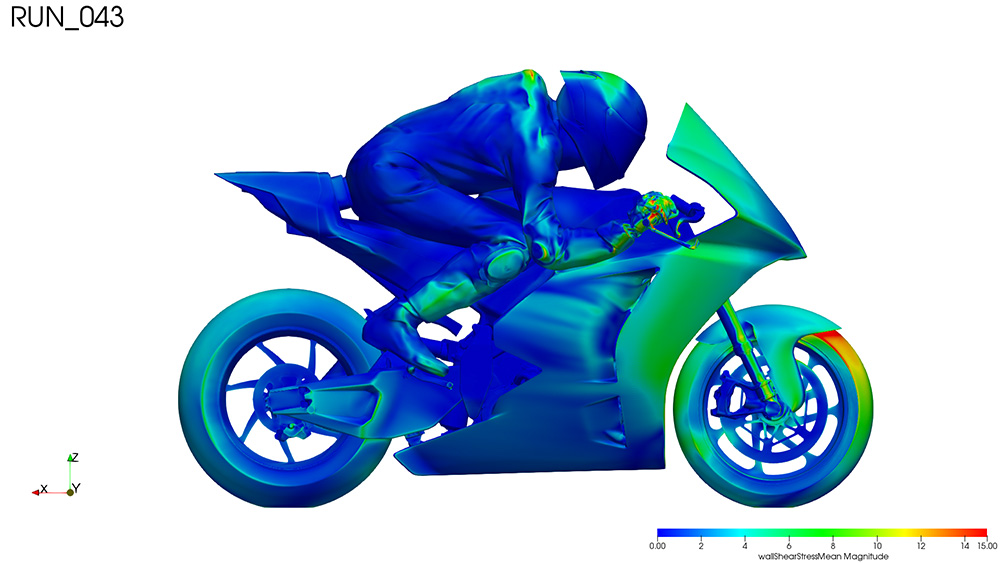
Which were the smartest?
“I would say using the battery pack as a frame: so attach to the battery pack the mini-frame at the front, attach the motor directly to the battery pack and then the swingarm. Let's say that if you can't make the powertrain weigh less, you can still use it structurally. And then we looked for lightness everywhere: the first element we went to take weight off was the battery pack, choosing a carbon casing and then making it a stressed, structural element to optimise structural and weight performance. In addition, its shape allows it to be used as an air extractor from the radiators and to carry the connections of the other chassis components and the motor. In the end, we made it a multi-role, multi-function element. We also made our lives more complicated. We wanted to simultaneously: contain the weight of this piece, make it work as well as possible from a structural point of view, and have a bike with a small front section. So the battery shape becomes very complex, indeed not easy to fill with individual cells. In the end, it turned out to be a Masterpiece.”
And the cooling system?
“Another challenge: designed to cool every single cell, it is a highly complex system in all three directions. It is perhaps the most challenging part of the whole design. Batteries have their own temperature limit that has not to be exceeded.”
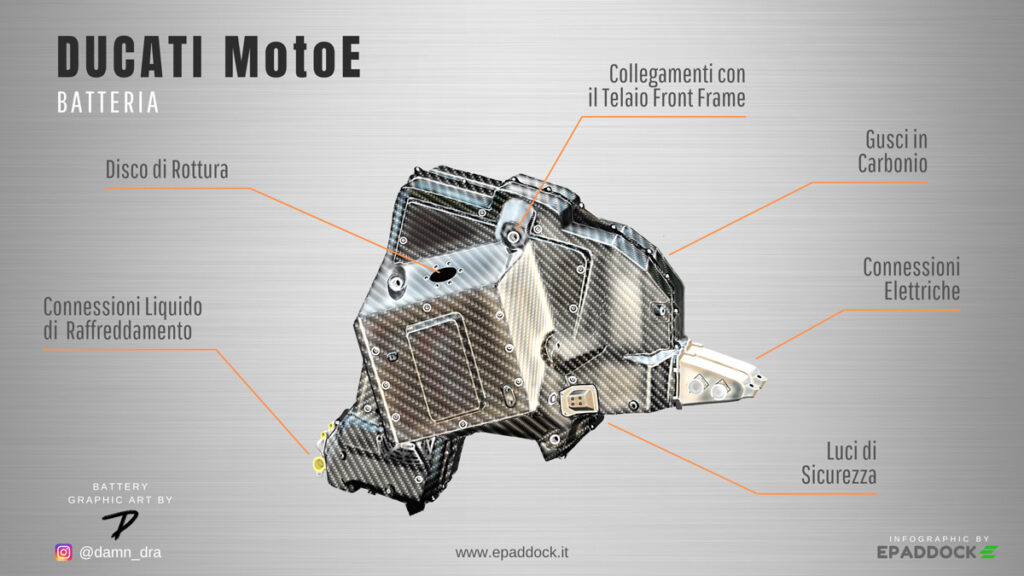
How did you combine aerodynamics, cooling and the engine's power curve?
“From the aerodynamic point of view, the bike had two requirements: the search for the minimum aerodynamic drag and efficient cooling. Fortunately, we got off to an excellent start: the bike at one point had excellent cooling performance, so we could also find a good balance with the aerodynamic needs. We made the usual design loops as we do on all our models, not just the ones for racing. Thanks to the support of Ducati Corse, we do extensive aerodynamic studies on any bike: even the Multistrada goes into the wind tunnel and does CFD (Computational Fluid Dynamics) simulations, in that case, not looking for maximum performance but maximum comfort for the rider and passenger. In the case of MotoE, we did the first sketches because the bike had to be a cousin of a Panigale and a Ducati Superbike, and Ducati Corse had the optimum design for the surfaces in terms of penetration coefficient: we tried to put the two together. So we worked a lot on the radii and on the tangents of the surfaces."
What is the stylistic character of the MotoE?
“It's a Ducati Superbike. We had in mind to make a recognisable Ducati because racing will be our gateway into the electric world. The first thing you do is what everyone remembers, so here we had to show the imprint of a Ducati, recognisable, with the character of our Superbikes. If you look at the front end, it has the layout with the two eyebrows typical of our bikes, the slim, pointed, streamlined tail. The tail was an area where we had more freedom than others because it affects, sure, the aerodynamics, but not as much as the fairing or the side parts. So there we had more freedom, and we made a Ducati Superbike tail.”
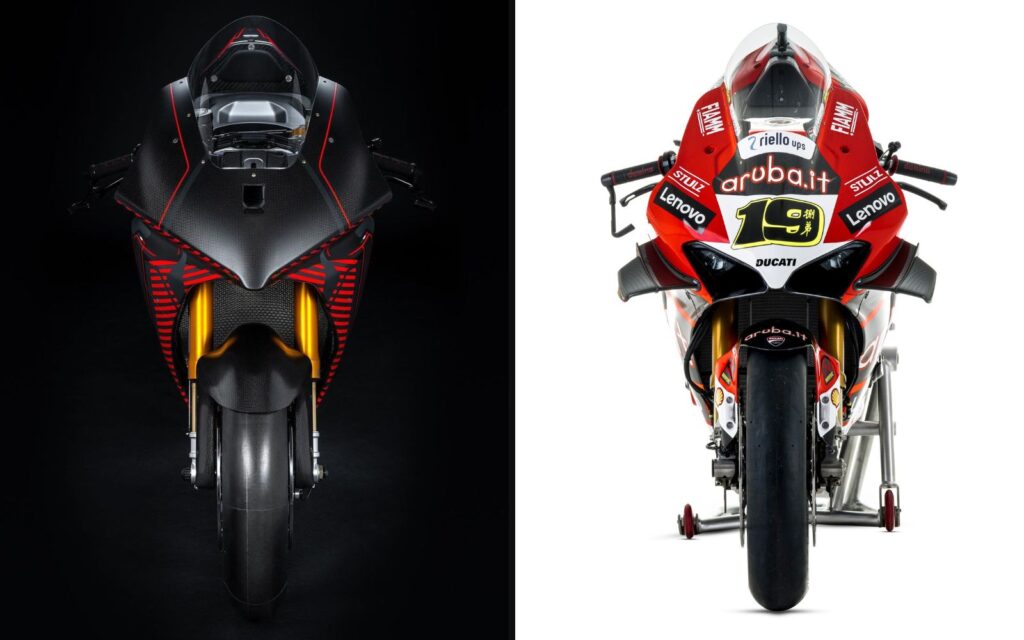
Some elements that characterise a Ducati are necessarily lost here: the engine and the exhaust. Which ones have you kept?
“The basic ones, as per our key rules. All Ducatis have to be essential, compact, recognisable, and sporty, and they have to be sensual. Sensuality is not unique; there's no one way to get it; when you make a Monster, it has a certain sensuality; if you make a Diavel, it has a different one; if you make a racing prototype like this, you have a 'technical sensuality'. It sounds like nonsense, but not to a motorbike enthusiast, who can find even a swingarm made in a certain way, a frame or a certain fairing sensual. Fortunately, the racing bike ergonomics of recent years help us in this direction; to accommodate the rider in the modern riding style, the shapes of the tank become very sculptural and sensual, moulded and muscular. This help us compared to a few years ago when tanks were more spherical and simpler. Now the racing tanks are really beautiful!”
Can you explain further?
“Well, for us designers, it is exciting that the tank is no longer a real tank but a cover that also becomes an aerodynamic tool: this opens up one of the most exciting opportunities in the field of electric motorbike design. The possibility of offering the bike in a standard configuration and adapting the tank cover to the individual customer by 3D printing it after doing a morphological scan of the rider, like it’s done with racing cars, is an exciting prospect. And in my opinion, it will come relatively easy on the first electric motorbikes, thanks to 3D printing that allows you to do it at a reasonable cost. Or you could break down the tank surfaces and adjust them separately: you could enlarge, restrict, lower or extend them. In my opinion, the area of the tank and of the rider’s legs is where there will be more evolutions in the future."
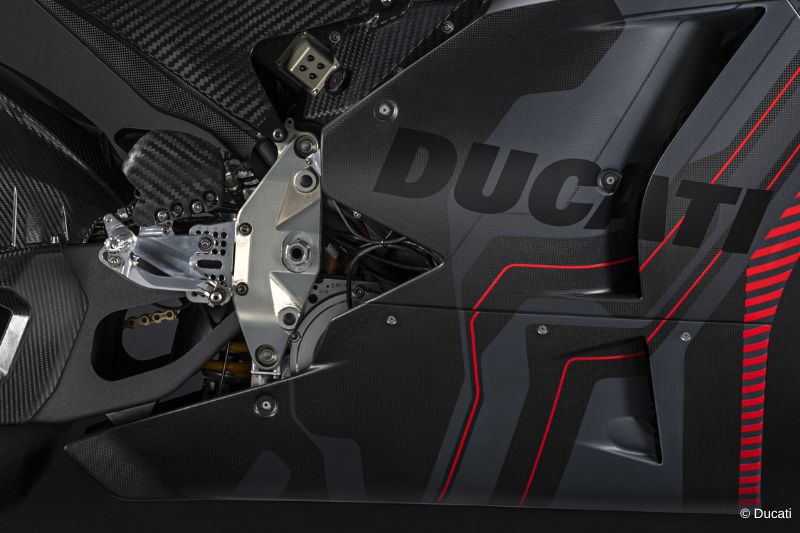
Technical sensuality. On all Ducati models, some elements come out of the fairing and show off. What have you managed to do here?
“Here we managed to make a few cuts on the fairing that show the stiffening plates connected to the battery, and the swingarm is also in view. It's a double-arm swingarm designed by us that tells you you're looking at a Ducati because it's a brother of the swingarm on the Multistrada or the Monster. The bike is very dressed up for aerodynamic reasons, but we wanted to show the motor anyway. That was a choice we made. We don't like to be nostalgic. We have traditions: the trellis frame, the single-sided swingarm, etc etc. But when these elements start to limit you in your search for performance, you have to step up. This is an electric bike, the engine is electric, and it's no longer the twin-cylinder: if that's the engine, let's show that. You don't have to be ashamed; Ducati is a technology company that shows the current technology. When you have a V2 engine, you show your V2 proudly; when you make the V4, you show the V4; when you make the electric motor, you show the electric motor. The rule is: you have to be proud of your technology. And our technology works well, does its job, and a technology that works well is also beautiful, so you proudly show it."
Is the ergonomics of the MotoE the same as the Superbike, or is it different?
“The ergonomics have been changed a little bit; the rider sits a little bit back to try to balance the weight distribution. The ergonomics, regarding seat and tank, are the same as on a Superbike or a MotoGP, but where the rider sits is a little different. We started with a more lowered rider position to load more the rear tyre, but progressively, during testing, we moved the rider a little closer to the front."
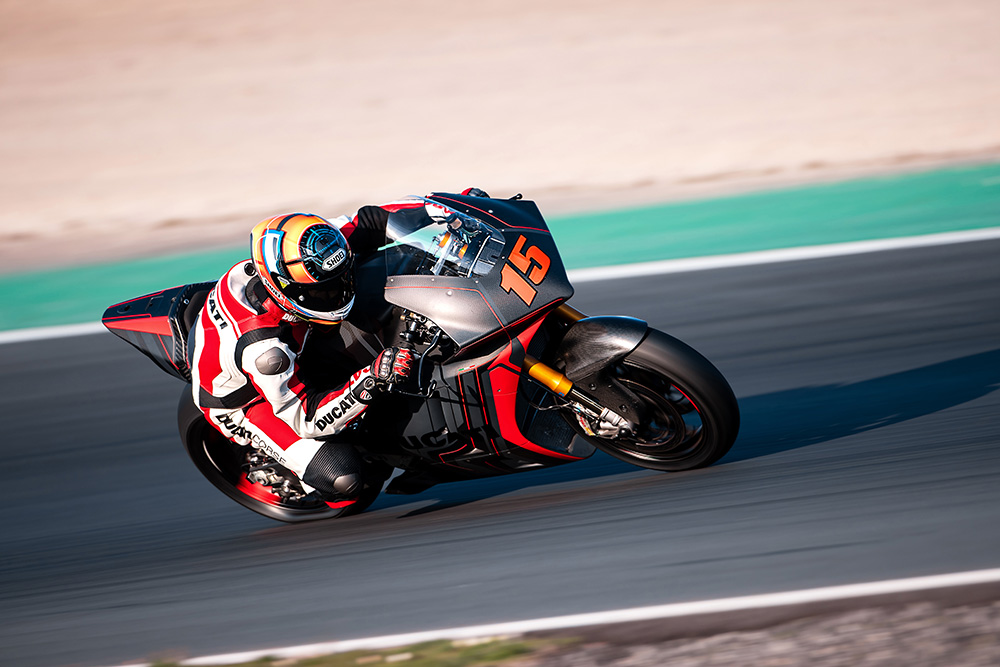
The sound, which is a characteristic element of your bike, what happens to it?
“Obviously, the sound has nothing to do with our typical exhaust sound. But the sound of the MotoE has its own charm, like that of an airplane, a jet. So it's not lost completely; it's very different, it's evolved. But, unfortunately, one thing that is completely lost is the loud sound at the start. That is really a pity. Nevertheless, I like the sound that these bikes have during the race. You don't lose it, but it's different. And then you have new sounds: the aerodynamic whoosh, the scream of the brakes, the scratch of tyres. Companies will probably develop a characteristic sound, which depends greatly on aerodynamics and the type of motor adopted. That could become a distinctive element between the different companies. The sound of our bike is generated by the motor and transmission gears; we don't like the idea of an artificial sound because it would go against the essentiality and authenticity that characterises Ducati bikes.”
At the start of the project, did you have an internal competition between the designers?
“No, not this time; this time, we gave the assignment to Andrea Amato, who then became our Chief Designer, having done this project, the Monster and the Multistrada, in the same year.”
Last questions: the livery of the prototype is that of a military jet.
“The idea was to make a 2.0 camouflage livery. The bike is all carbon, so we put the exposed carbon as one of the colours that give you camouflage. So it's a livery that's a bit reminiscent of jets with these details that echo the design of the electronic boards, but in red because we're Ducati. So it's not the traditional Ducati Red, but one of the Ducati Reds, the fluorescent red we use on some of our models."
Will Ducati develop the basic livery of the championship?
“Yes, I have seen some previews, but it's not yet developed in detail. We will do it in close collaboration with Dorna. Then the teams will have their sectors for customisation and sponsors.”
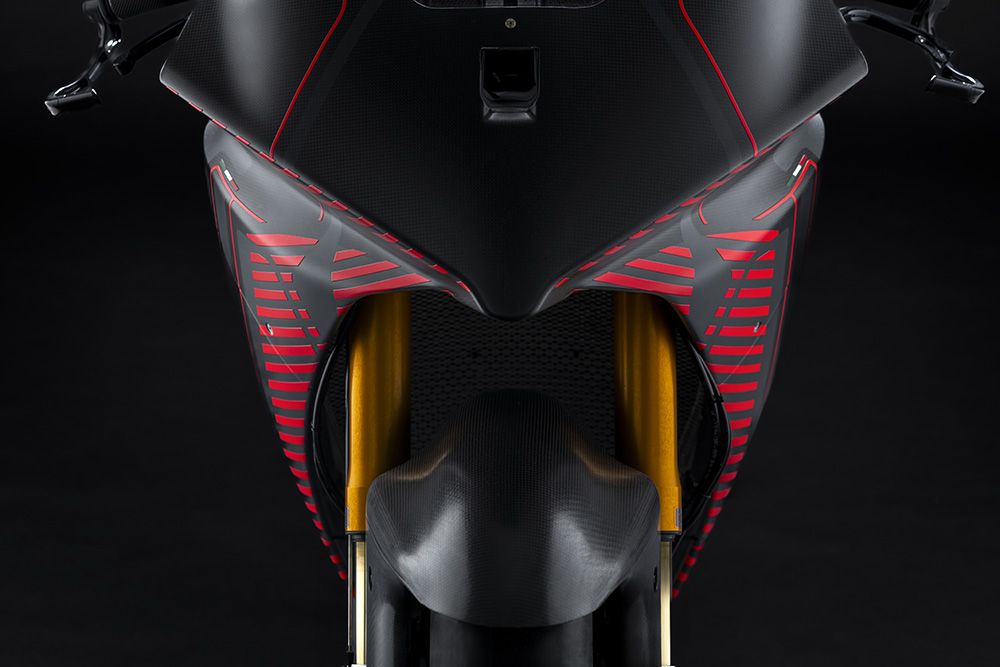
Ducati MotoE
The gallery of Ducati's electric motorbike
Photos: Ducati


To be updated on the MotoE World Championship, subscribe to Epaddock's Whatsapp broadcast and receive all our news for free on your mobile phone in real time: find out how here.



